Sebastian Bornauw has been steadily growing his reputation as an impressive ball-playing and defensively sturdy defender in the Bundesliga at FC Koln. It wasn’t surprising to see him depart Koln this summer, with plenty of teams linked with the centre-back over the past 12 months. With Wolfsburg pipping a Champions League spot, the chance to play in Europe’s premier competition is likely what gave Die Wolves the lead in the chase for the Belgian’s signature. Bornauw will provide competition for John Brooks and Marin Pongracic, and may have been pre-emptively signed with Maxence Lacroix expected to generate heavy interest this summer having been heavily linked with Tottenham. Whatever the reason, the 22-year-old has plenty of potential and along with Pongracic, and potentially Lacroix if they can retain him, Wolfsburg have an outstanding, young defensive core. This tactical analysis and scout report will highlight some of the key strengths of Bornauw and will provide an analysis on what he can bring to Wolfsburg in the forthcoming season.
Position and use in different formations
Bornauw is right-footed, but is perfectly able with his left too, and as such this gives him a flexibility within the centre-back position. He can play right-sided or left-sided in a centre-back duo, but equally so, he can play across all three positions when playing as a centre-back in a back three.
Generally speaking, he will play as a right-sided centre-back though, and while Koln predominantly played with a back four, as we can see in the image below Koln also used a back five on a number of occasions. With this formation, Bornauw was most often seen in the centre of a back three.
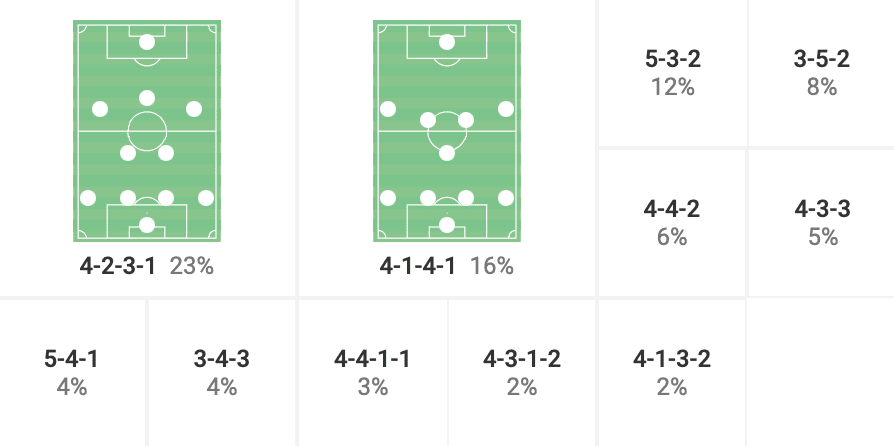
Bornauw’s flexibility is represented in his heat map from the 2020/21 season, which is shown underneath. The Belgian’s average positioning varies between both half-spaces and the central channel, albeit with a slight leaning towards the right-side, and understandably so, given this was his most common position.
We can also see that there is little action at all in the opposition half. This suggests Bornauw holds a deep position for the most part, and is unlikely to drive forward in possession consistently, breaking into the opposition half. The data would back this up, with 0.33 dribbles per 90 last season, and 0.16 progressive runs per 90.
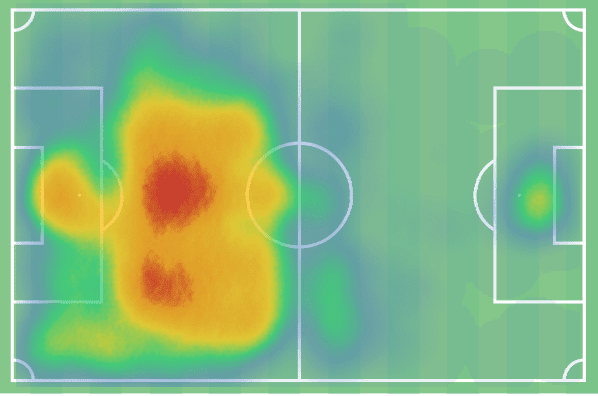
Positioning in the possession phase
Bornauw stays deep during the possession phase and will often anchor periods of possession, particularly if he’s playing centrally as part of a back five. Even in a back four, however, Koln would keep their centre-backs deep and compact when in possession. Whilst this was a tactical choice, Bornauw was clearly comfortable doing this.
Despite positioning himself in plenty of space and where he could see the entirety of the pitch, Bornauw generally preferred to keep much of his passing to shorter easier options, rarely looking to break lines with ground passes (which we will detail more in the next section).
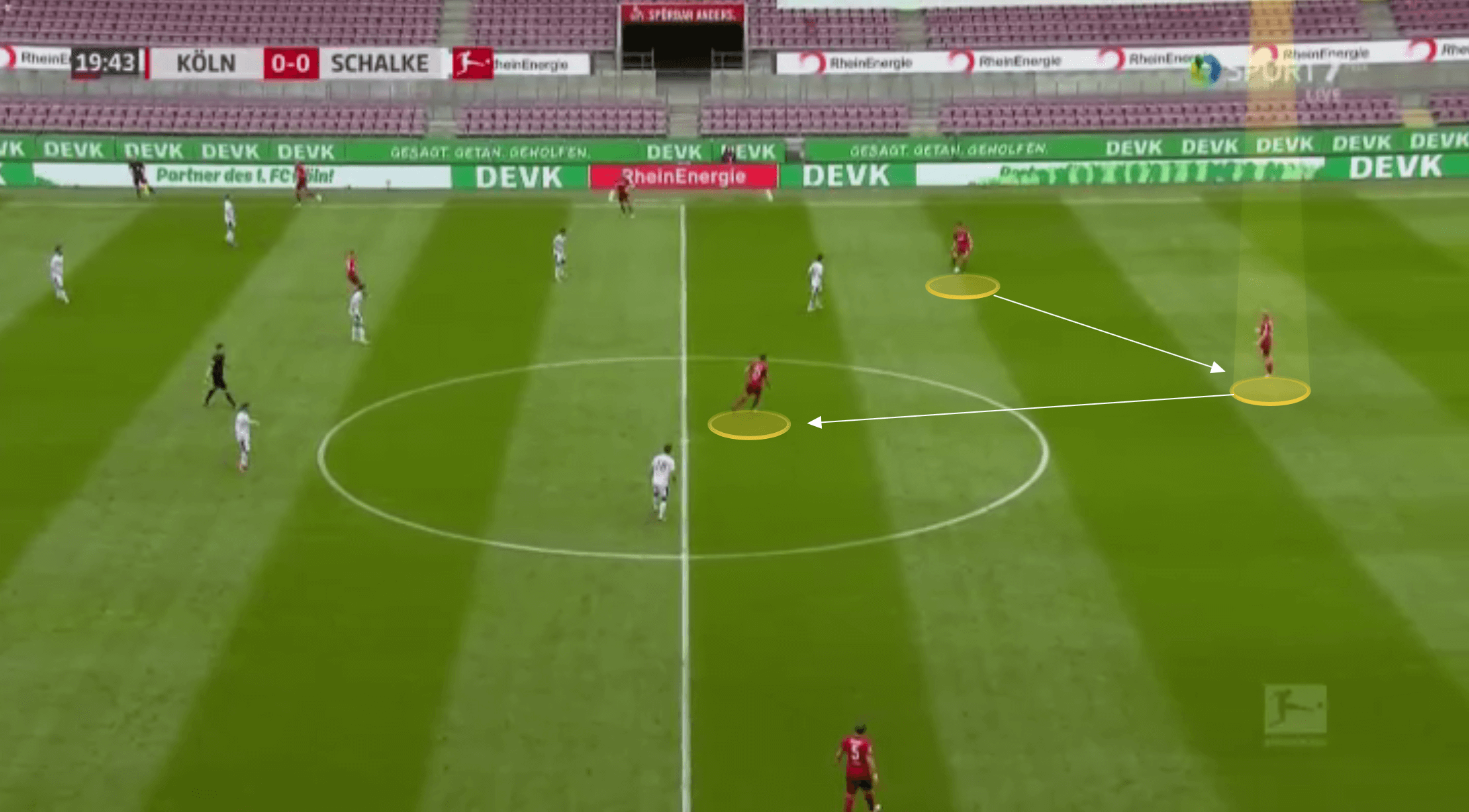
Bornauw’s overall awareness of his surroundings was good, with regular scanning as he received passes. However, as we can see in the image below where he scans upon receiving a pass from his right-back, Bornauw’s body positioning isn’t flat. Along with the angled press of the highlighted opponent, this led to Bornauw cutting off his own passing options, and rather than being able to circulate possession, he was forced to play a forward pass.
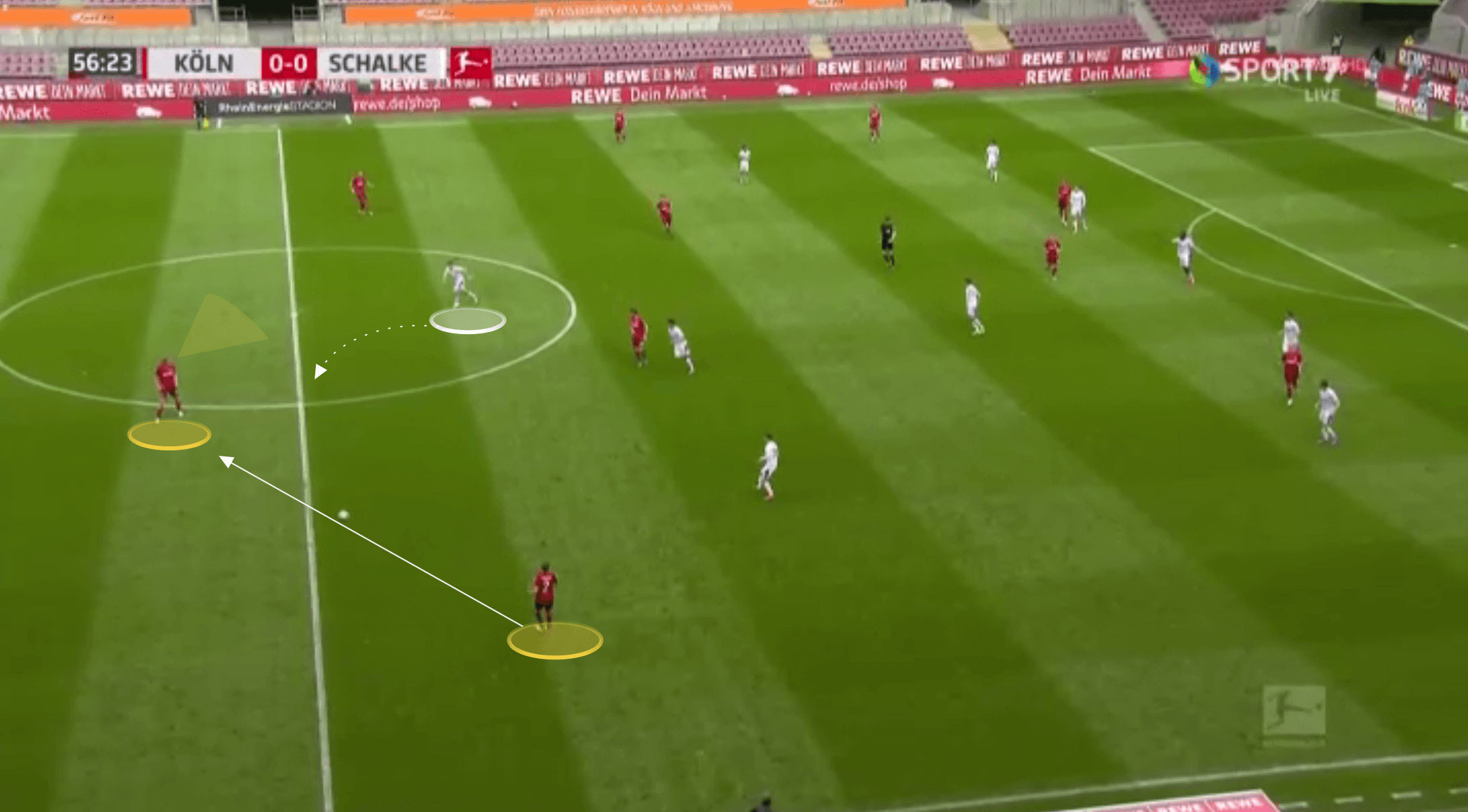
Even if Koln preferred the centre-backs to stay narrow, Bornauw still shows a lack of reaction at times to stretch the opposition’s press, specifically in areas where there is no need to remain compact.
Below is a prime example of this, where the ball is being circulated, and Bornauw remains tight to his centre-back partner, rather than seeing the pass from the left-back as a cue to shift across the pitch himself.
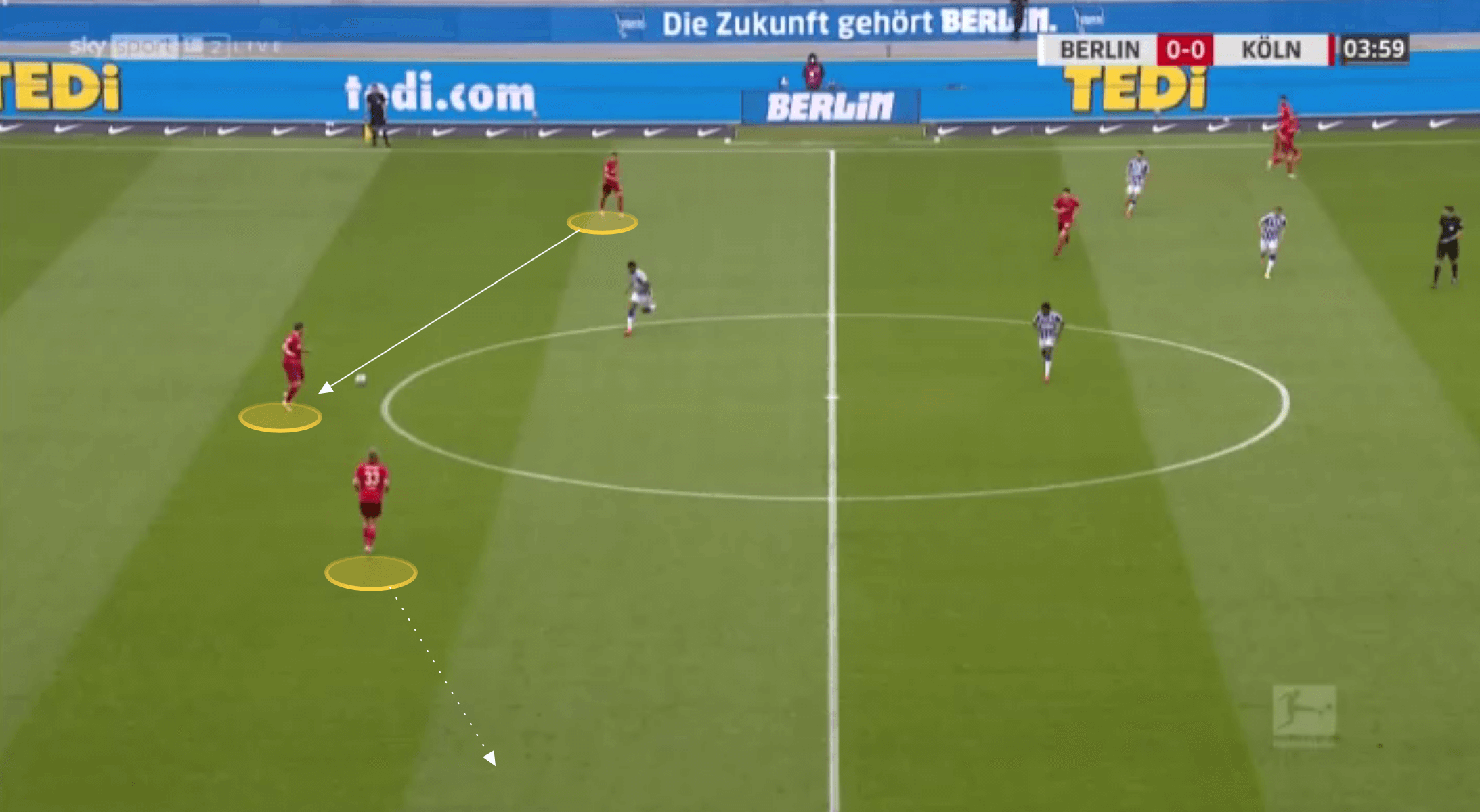
This has the impact of allowing the opposition press to remain compact, and therefore it doesn’t stretch them and create central passing lines from which Bornauw could play through. Instead, Bornauw receives the ball without that pass shifting the opponent’s defensive shape.
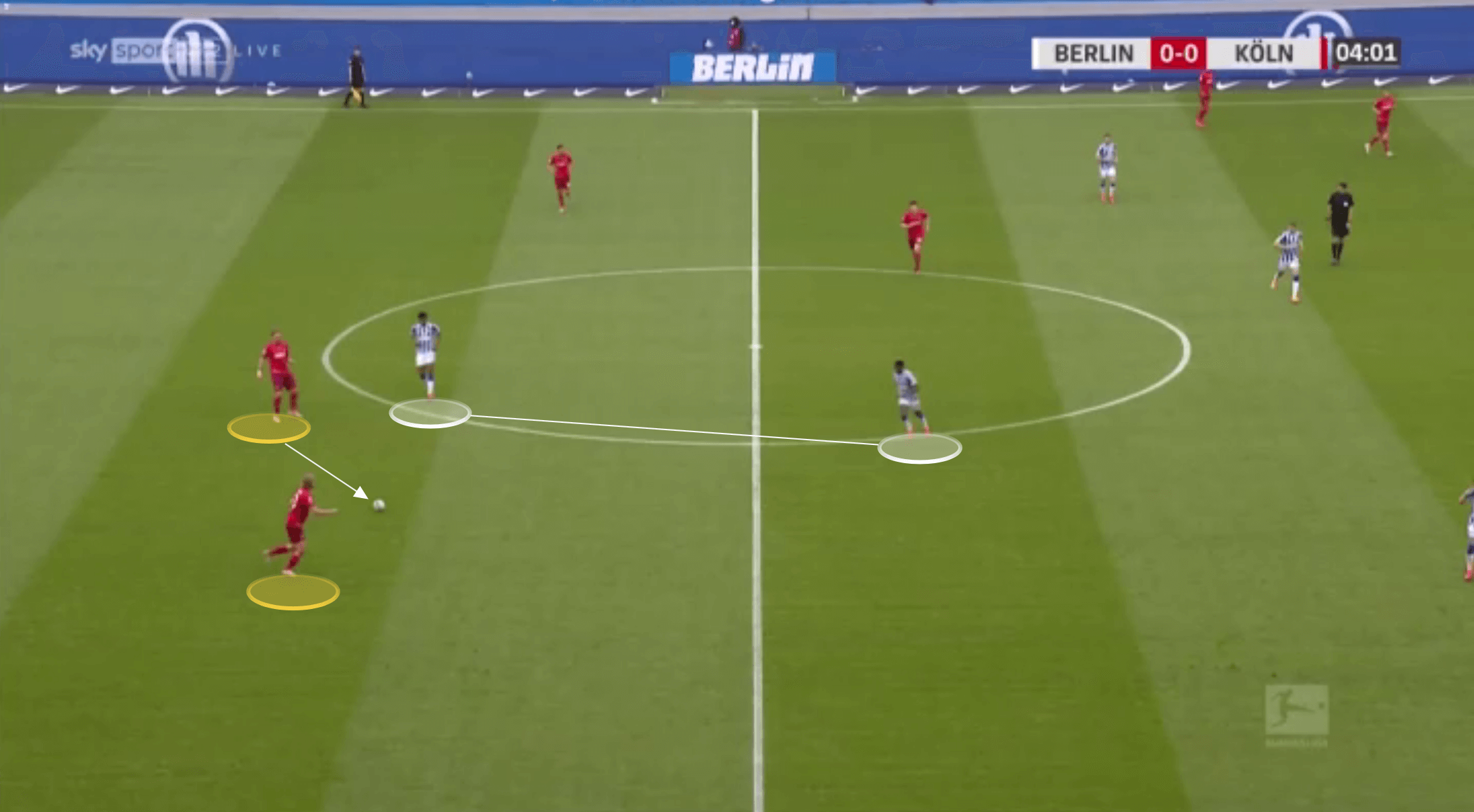
Passing and decision-making
Whilst he isn’t progressive when driving forward with the ball, Bornauw is moderately more so with his passing. His 5.83 progressive passes per 90 is respectable, and his 61.54% completion on these kinds of passes is equally so too.
For the most part, Bornauw resists breaking lines with central passes on the floor. Instead, if he is to break lines, he frequently looks for a wide pass, whether that’s a winger dropping in or a high positioned full-back or wing-back.
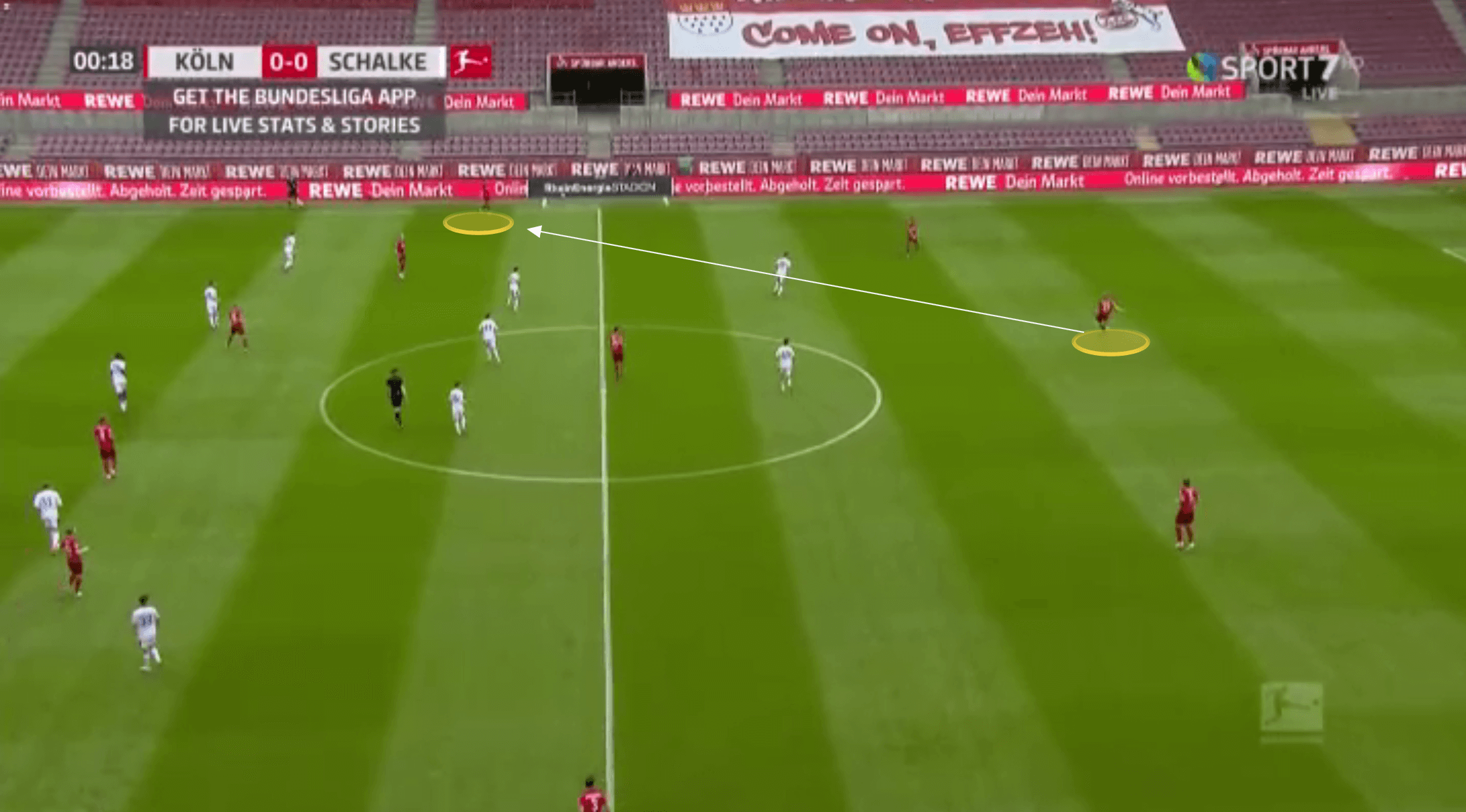
Bornauw plays a fair number of long passes, hitting 5.14 per 90, with a strong 64.29% completion on these. He varies the types of longer passes he plays though. He will hit switches of play, cross-field diagonal passes over the top of the far-side opposition full-back, and direct passes in the channel he is positioned in.
He is inconsistent with the speed at which he takes these passes on and this is an area he needs to develop. Bornauw looks up as the pass is played to him, and there are times where he will see an option and immediately decide to take this on.
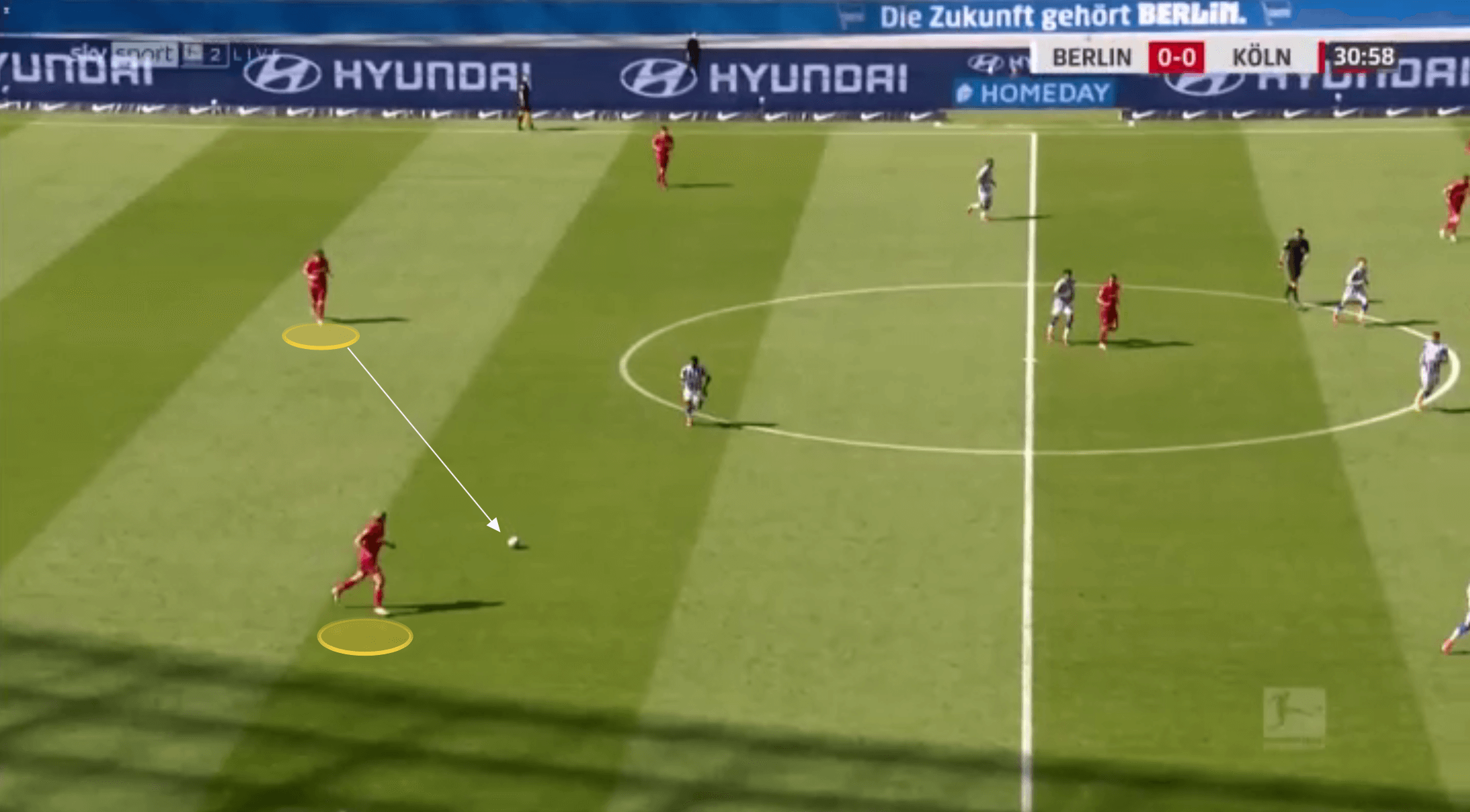
This occurs in the previous image where he looks over to the far-side whilst the ball is being played into him. As we can see below, he then takes a touch and immediately hits the diagonal pass, not allowing the opposition to anticipate this and shift across to intercept. He hits the pass with the required weight to ensure the opposition right-back can’t adjust to get across, and Bornauw’s pass hits its target.
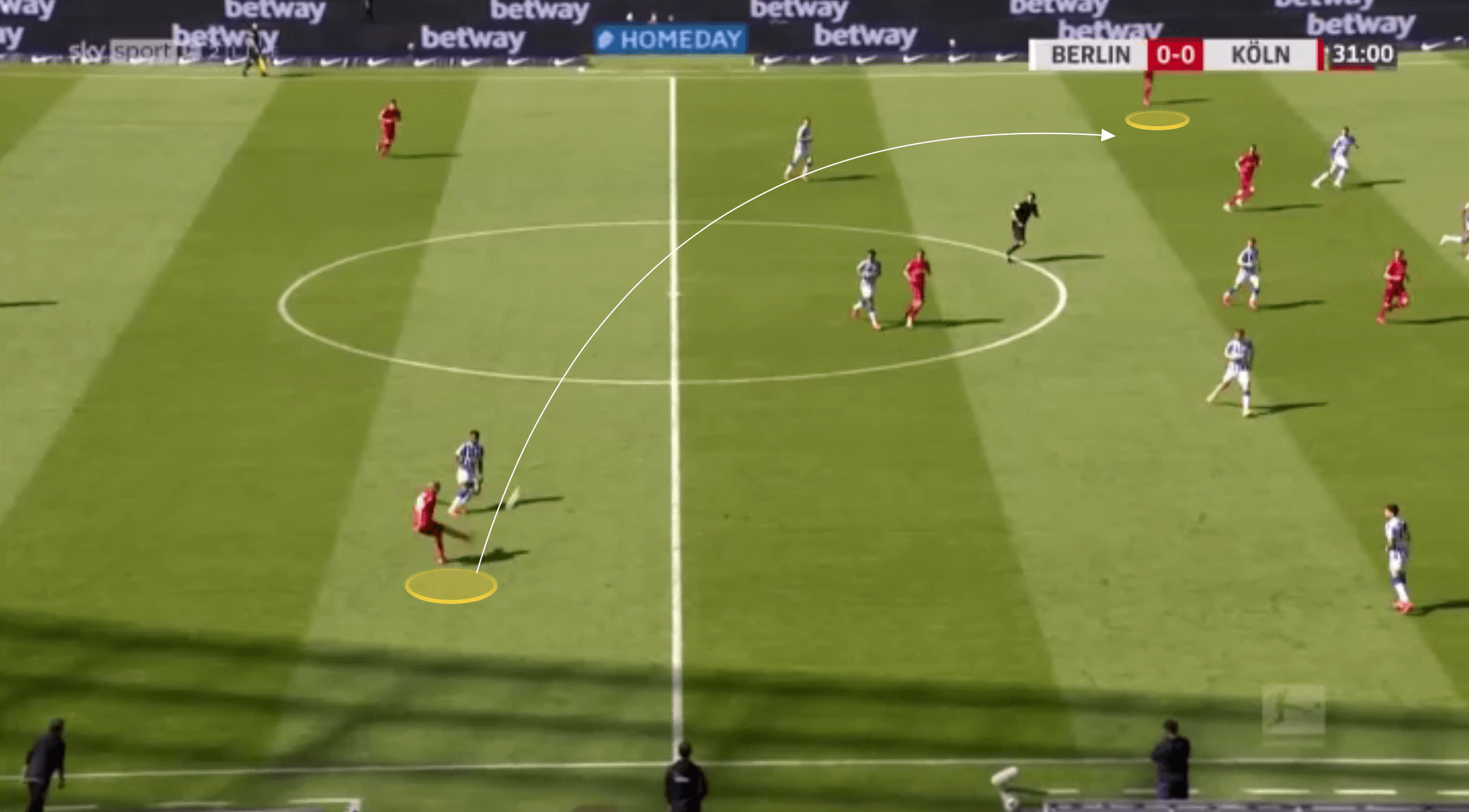
However, there are other moments where he holds onto possession for too long, unnecessarily delaying the pass and allowing the opposition to react, shift across, and intercept.
Below he has the ball 10 yards inside his own half, and he is looking at his left-winger. It’s a similar position and situation to the previous image, but he decides not to take the pass on.
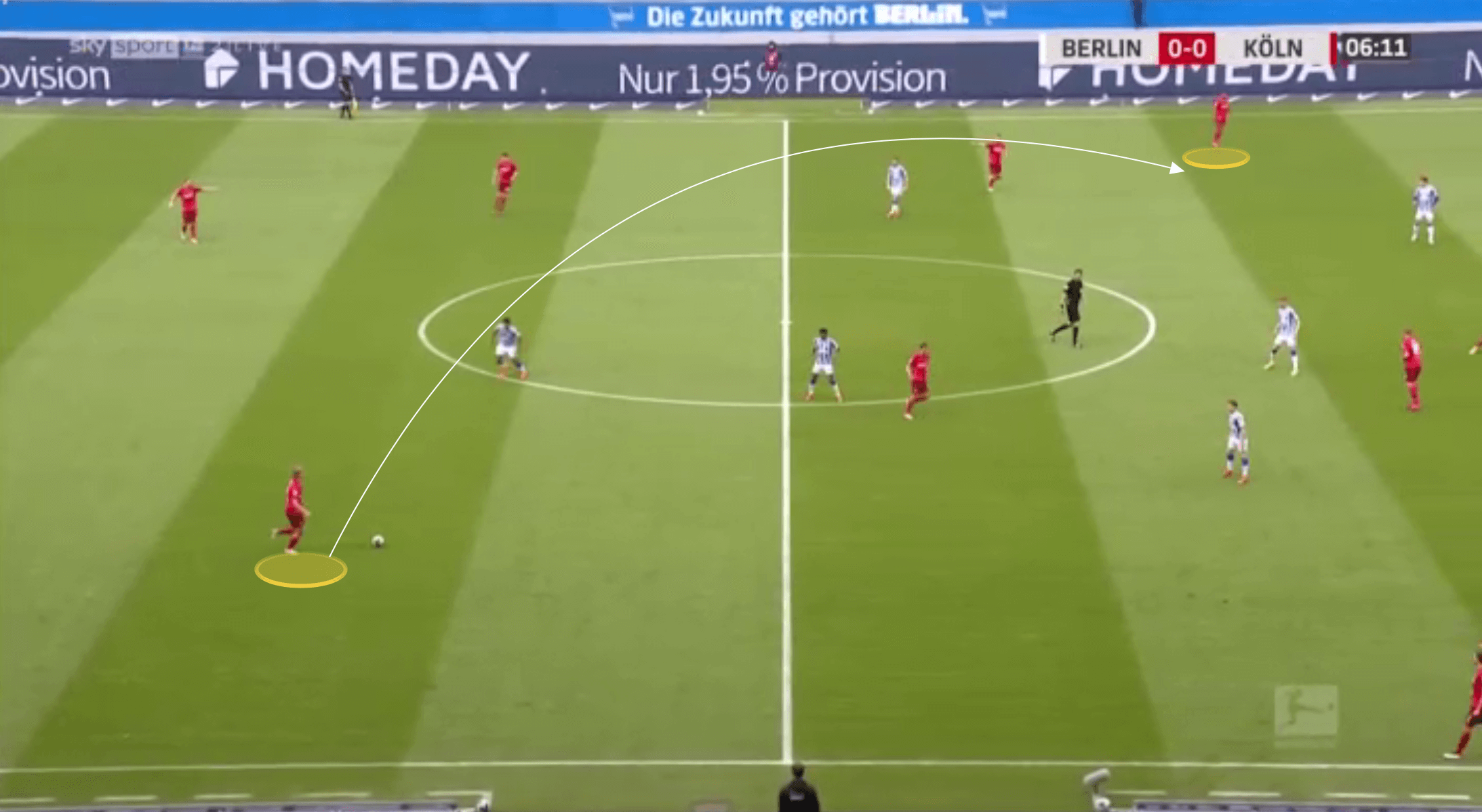
Instead, he drives forward 15 yards, before then looking to play the same pass. The opposition right-winger and right-back saw this intention four or five seconds before he took on this pass, and easily shifted across to win the ball.
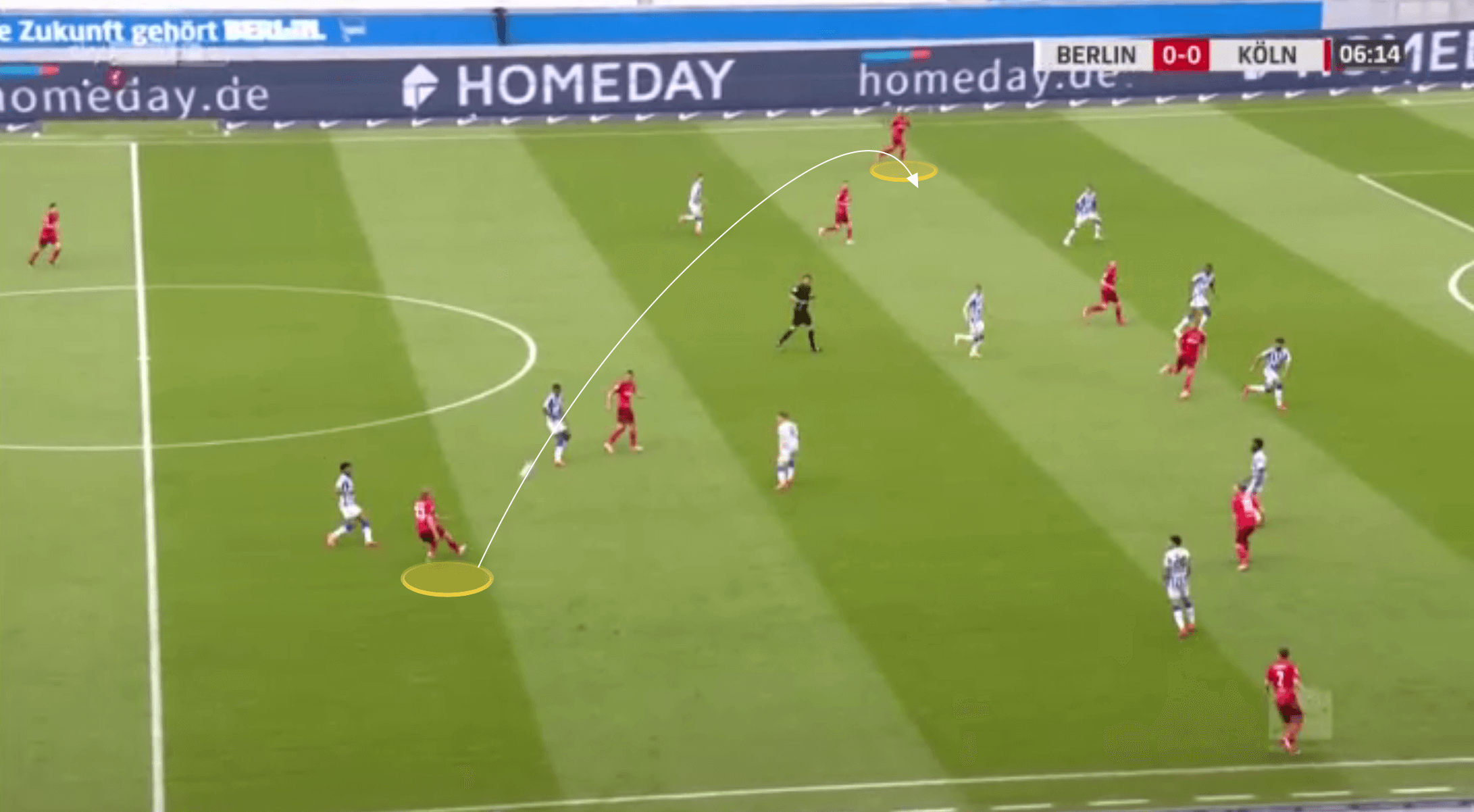
Upon attacking transition, Bornauw offloads the ball quickly. He initially looks for the forward pass, and if it isn’t on, generally seeks to retain possession. Below is an example of this occurring where he shows quality game-reading to foresee the forward pass, and get to the path of the pass before its intended target.
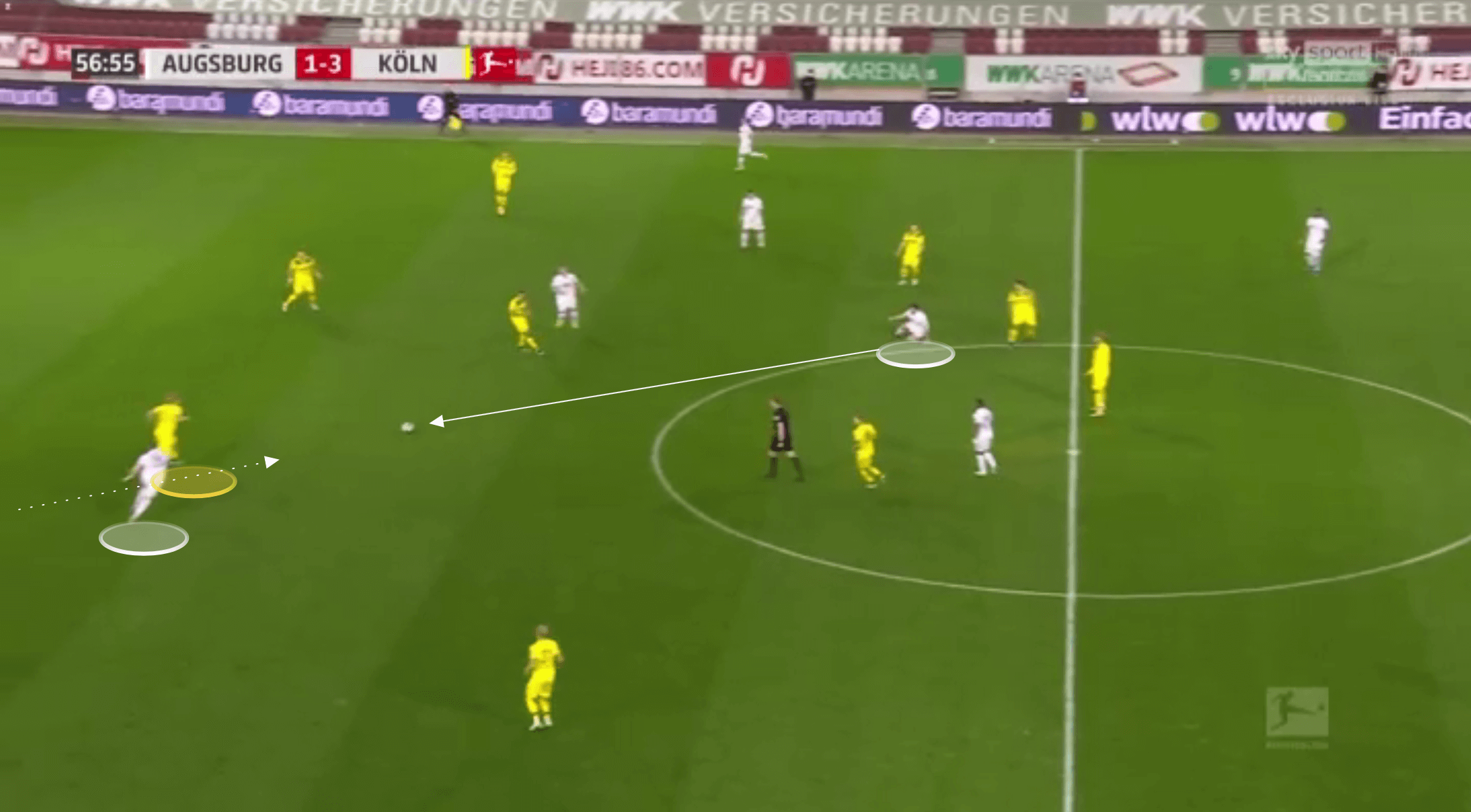
He immediately takes an aggressive touch forward, and finds a forward pass, breaking the midfield line as he does so.
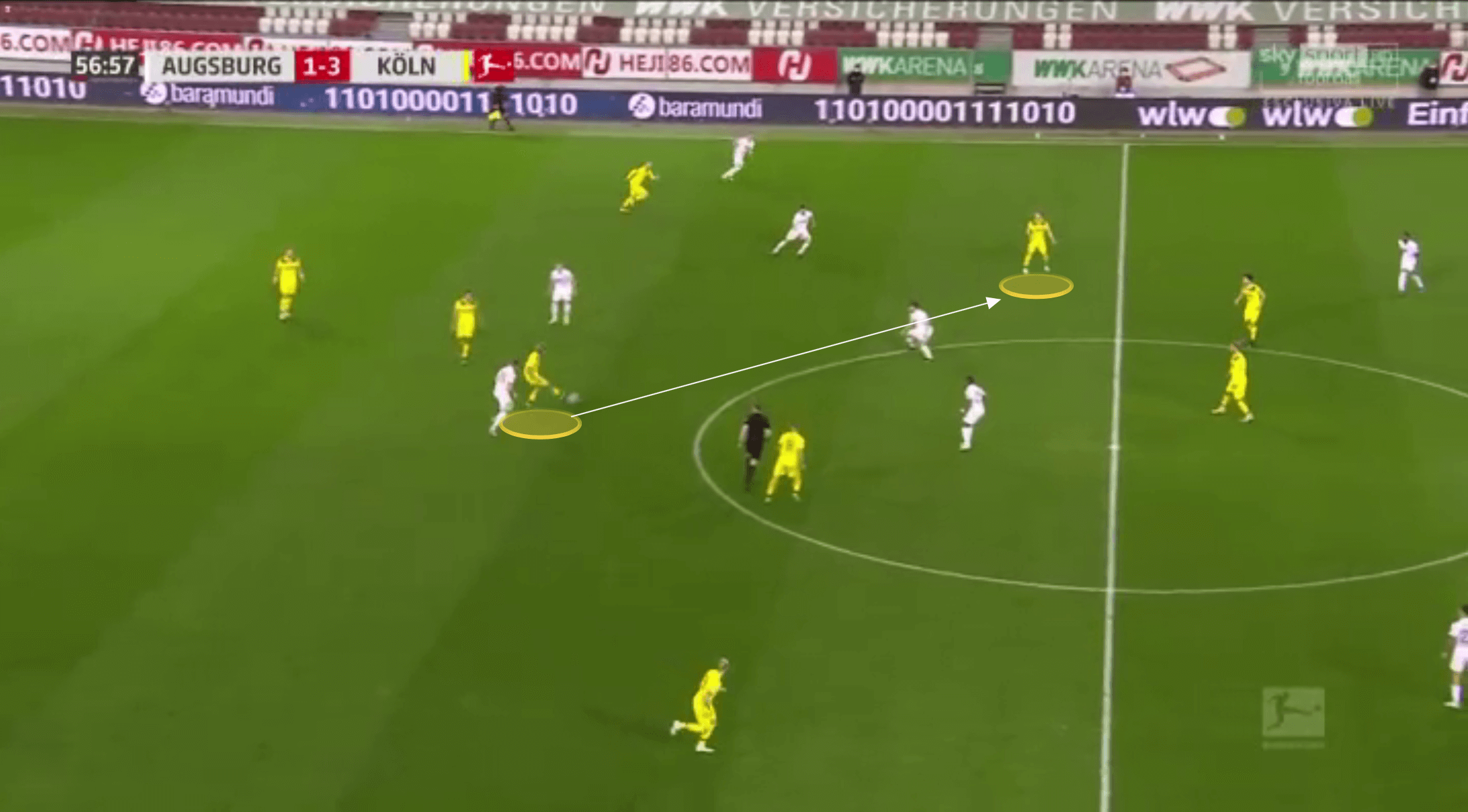
Defensive positioning and game-reading
Bornauw’s game-reading is evident with his work defensively, particularly with his ability to react and adjust to fast breaks, or areas where the opponent has an attacking superiority.
He shows excellent agility to quickly change direction and close the space quickly. We can see an example of this in the image below with a Freiburg central break occurring. Bornauw adjusts his initial movement to drop by recognizing the chance to press and delay the counter or win back possession.
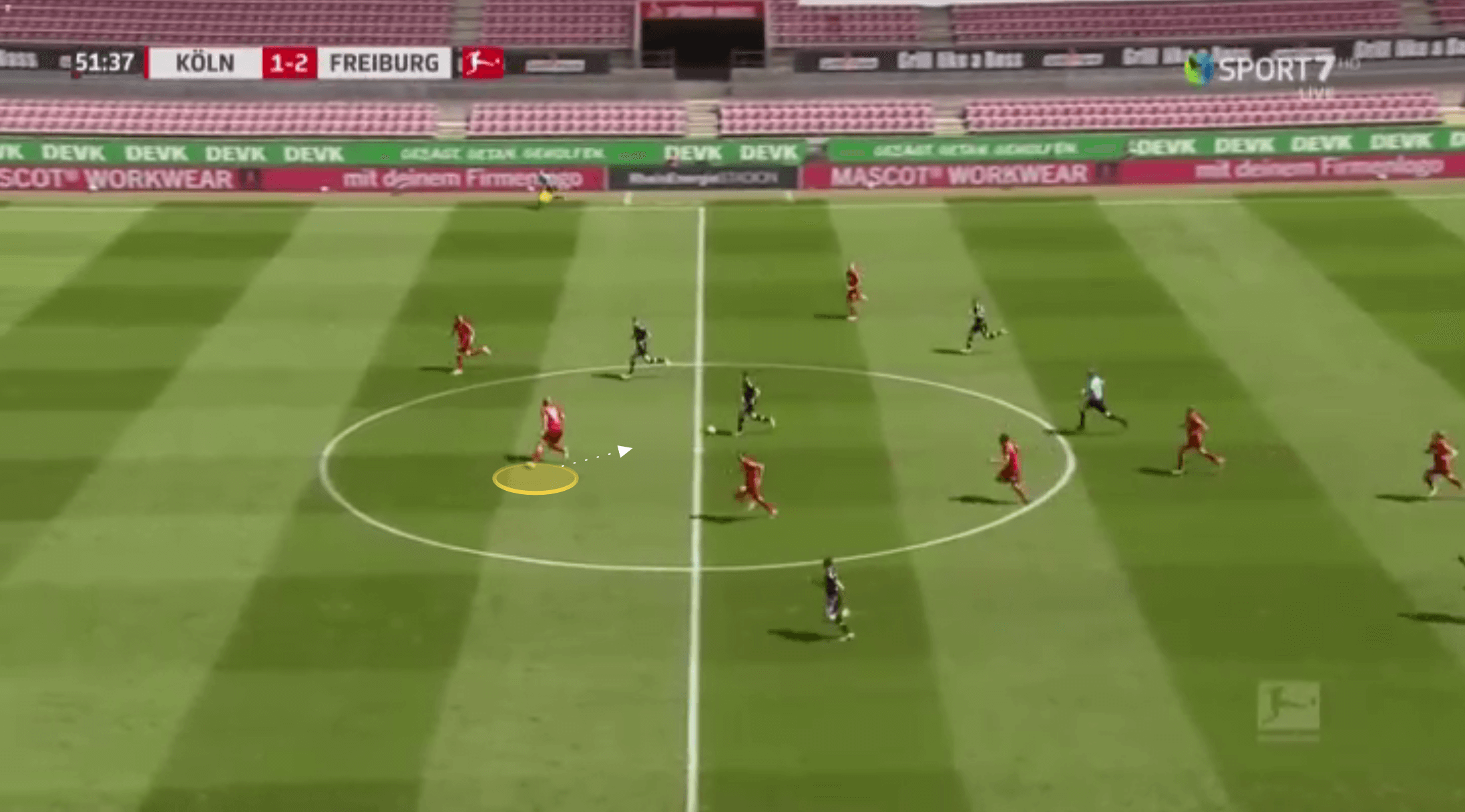
He closes the space without diving in, immediately getting touch tight with the ball-carrier and forcing them to adjust. By delaying the attack here, he allows his midfield to recover and thwarts Freiburg’s quick break.
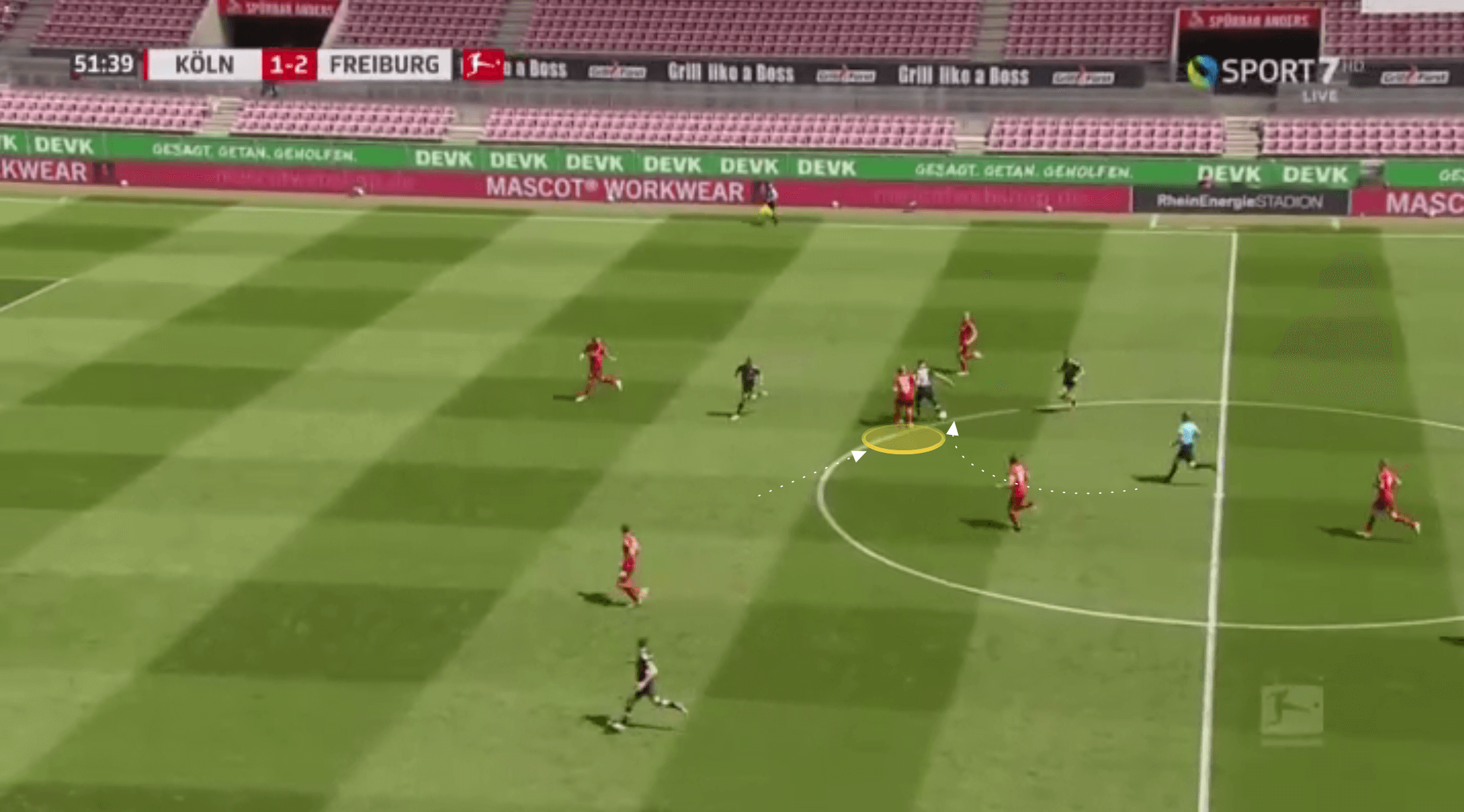
Similarly, he shows awareness not to get pulled out of position in a potentially dangerous situation. Below the pass is played through Koln’s midfield and Bornauw is the closest goal-side defender.
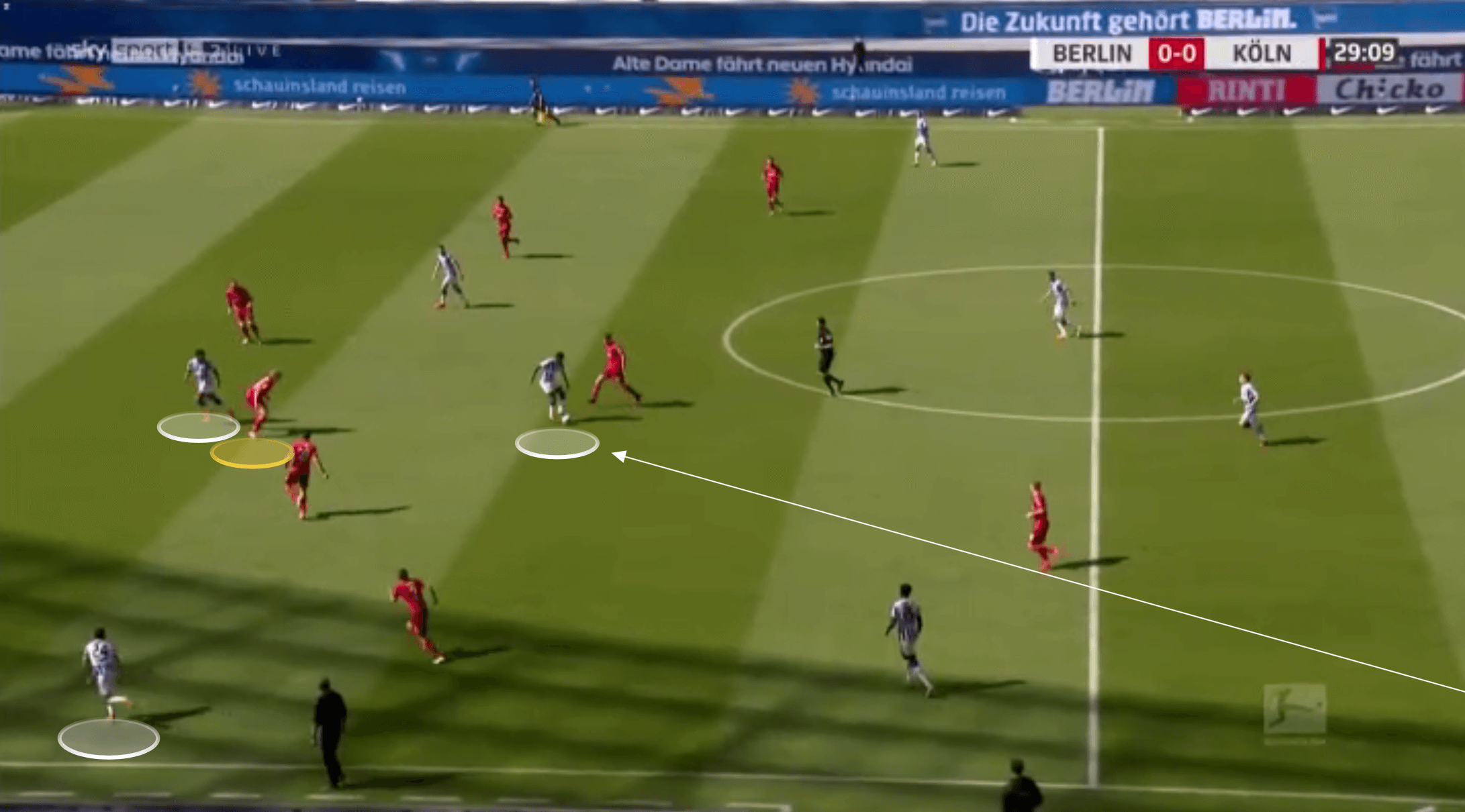
Whilst watching the ball carrier he is aware of the two runners either side of him. He doesn’t get pulled out here. Instead, he quickly reacts to take a side-on position, showing the ball-carrier away from the centre of the pitch, and giving him the opportunity to track and cover the outside runner, all while keeping his eye on the ball-carrier.
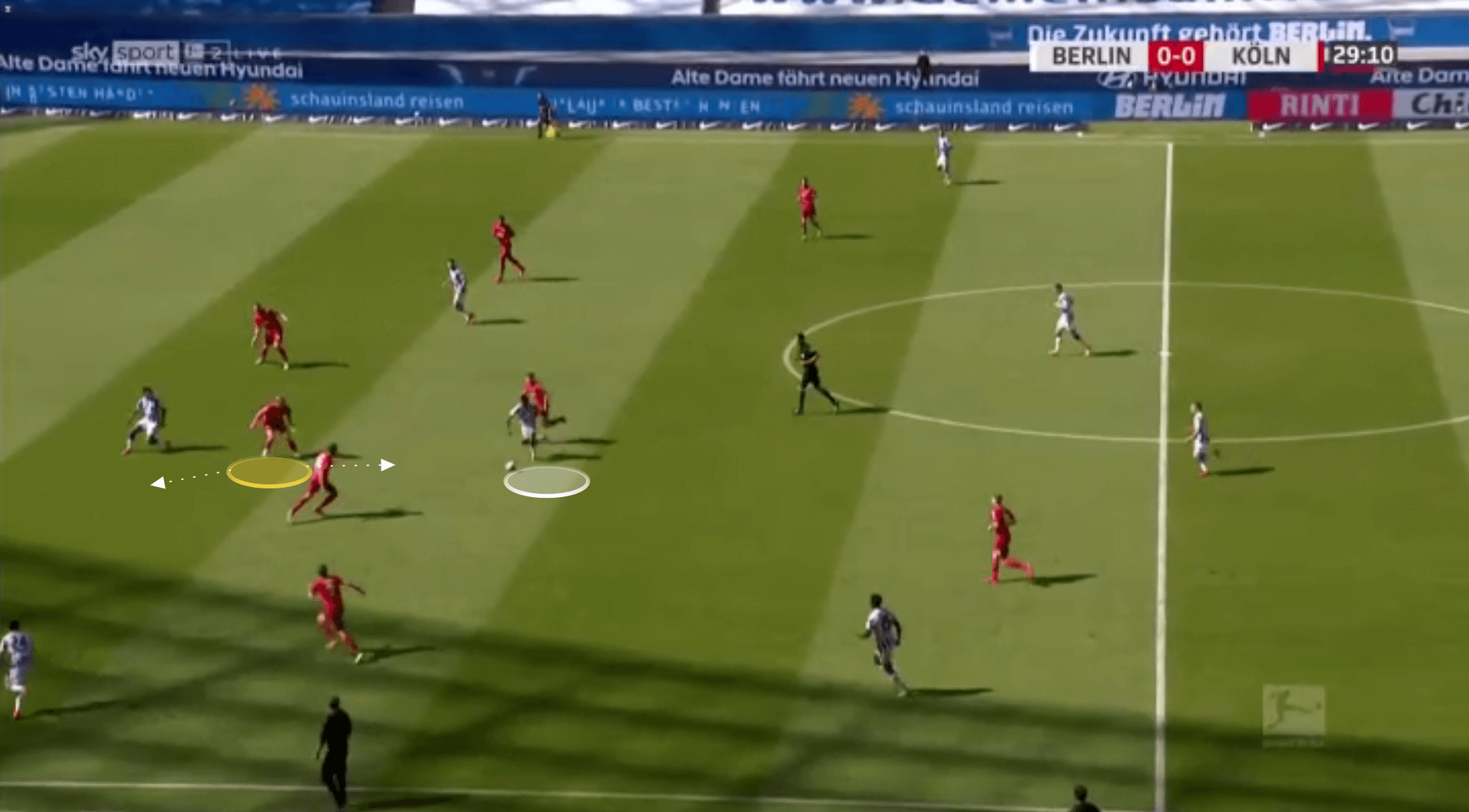
As the ball is played through he recovers and is able to prevent a clean shot on goal. Bornauw doesn’t have exceptional pace on the turn, but consistently takes these side-on positions to give him that head start when covering in behind. He possesses a slightly above average top speed for a centre-back when running in a straight line and does a fine job covering the space in behind.
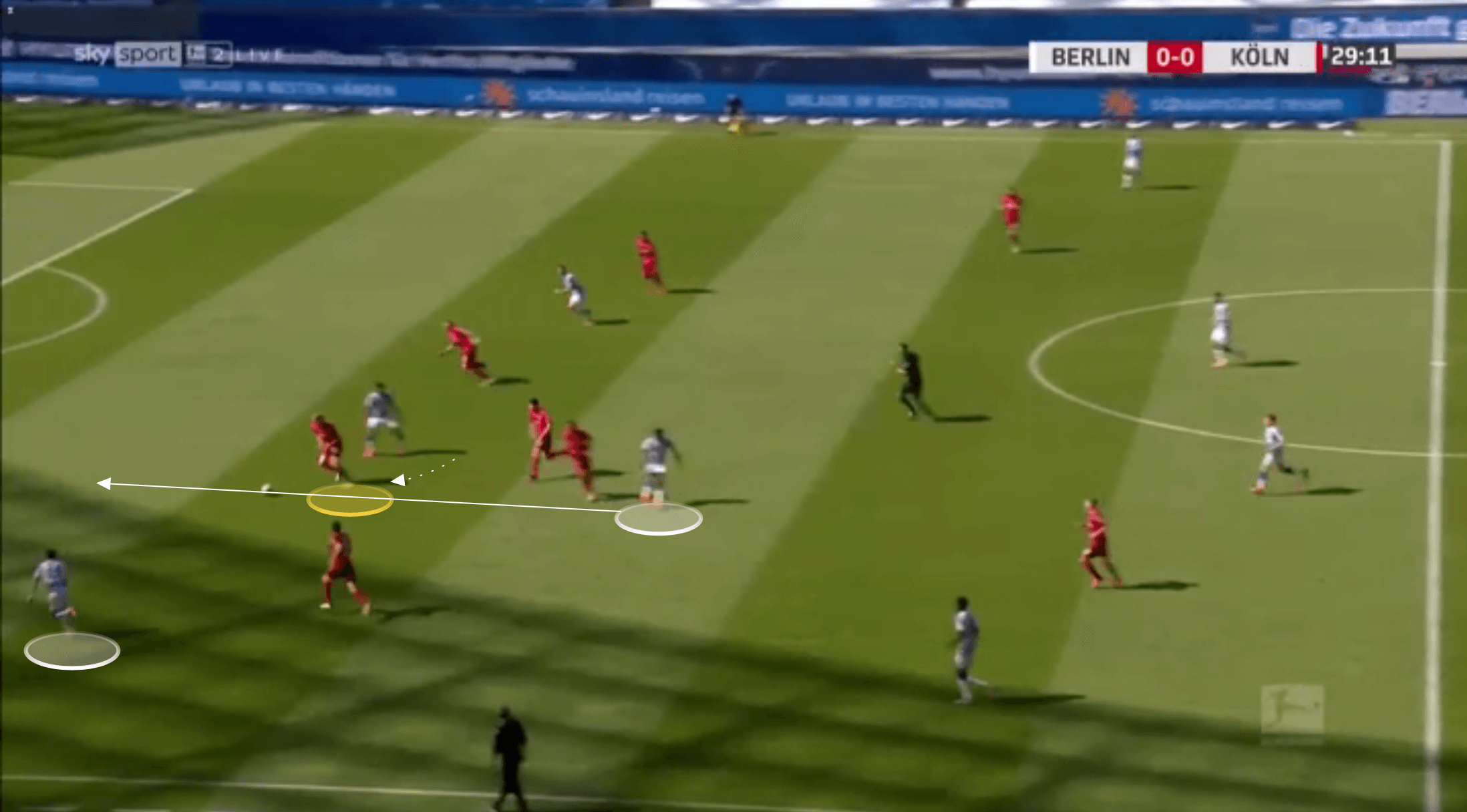
Bornauw has talent when competing aerially, however, he could win a slightly higher percentage of aerial duels. His 56.3% win percentage from last season is probably lower than his new employers Wolfsburg would like, however, this may be down to a drop in form with him winning 66.7% the season before.
He is at his best in this moment when the competing forward has his back to goal and is back-tracking to reach the long ball forward. Depending on their proximity, Bornauw uses two methods to gain the upper hand in this situation.
Firstly, if they backtrack relatively late, when the ball is nearly upon Bornauw and the forward, the Belgian centre-back will simply jump early and put his hands on the shoulders of the back-tracking forward to prevent them from being able to jump.
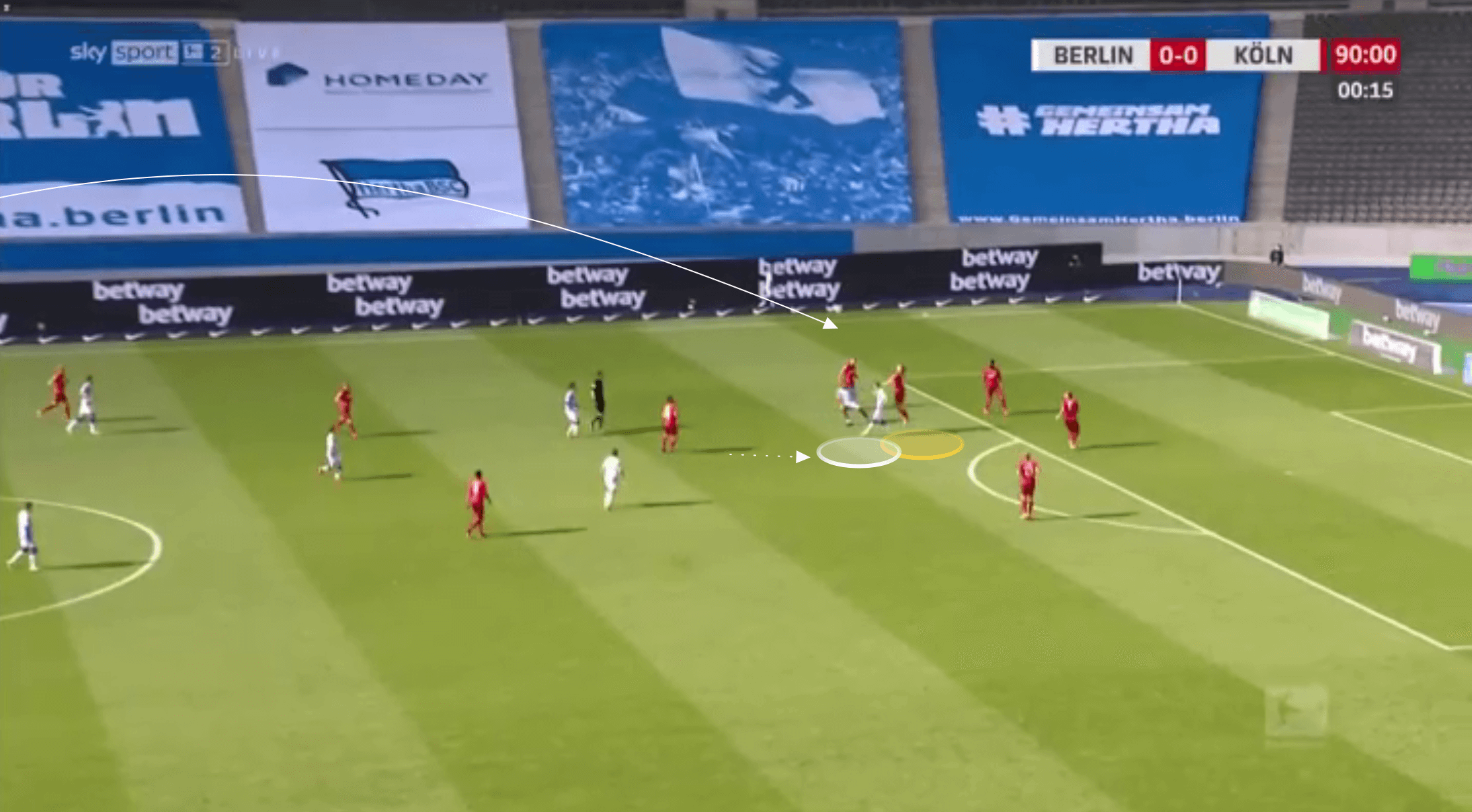
Bornauw’s reading of the flight of the ball is generally very good, and if the forward is back-tracking whilst the ball is still at the peak of its trajectory, Bornauw is strong enough to hold his ground.
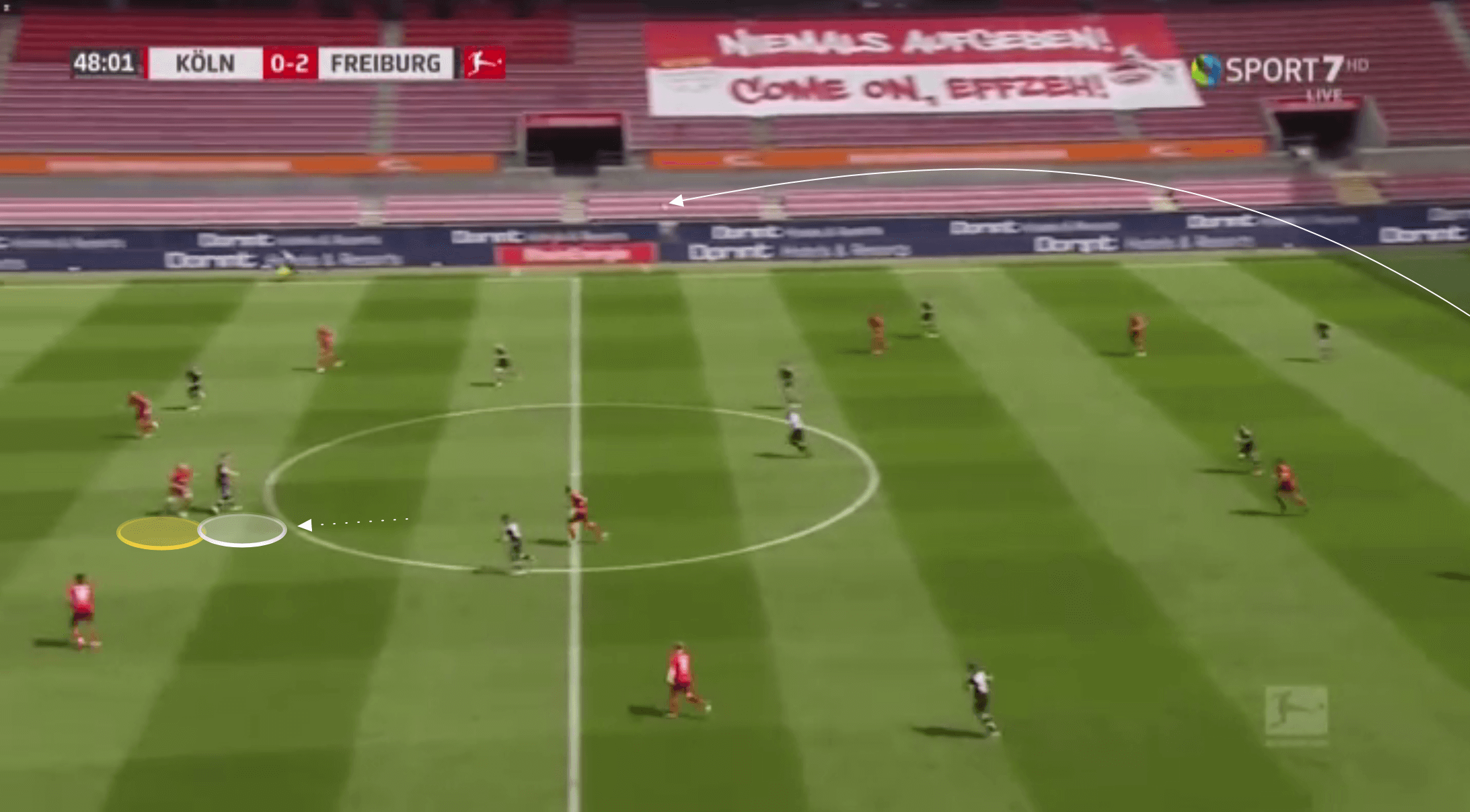
He stands up the forward and prevents them from being able to steal any more ground. He is strong, and holds them up, but does so fairly without giving away the foul. We can see this occurring in the following image.
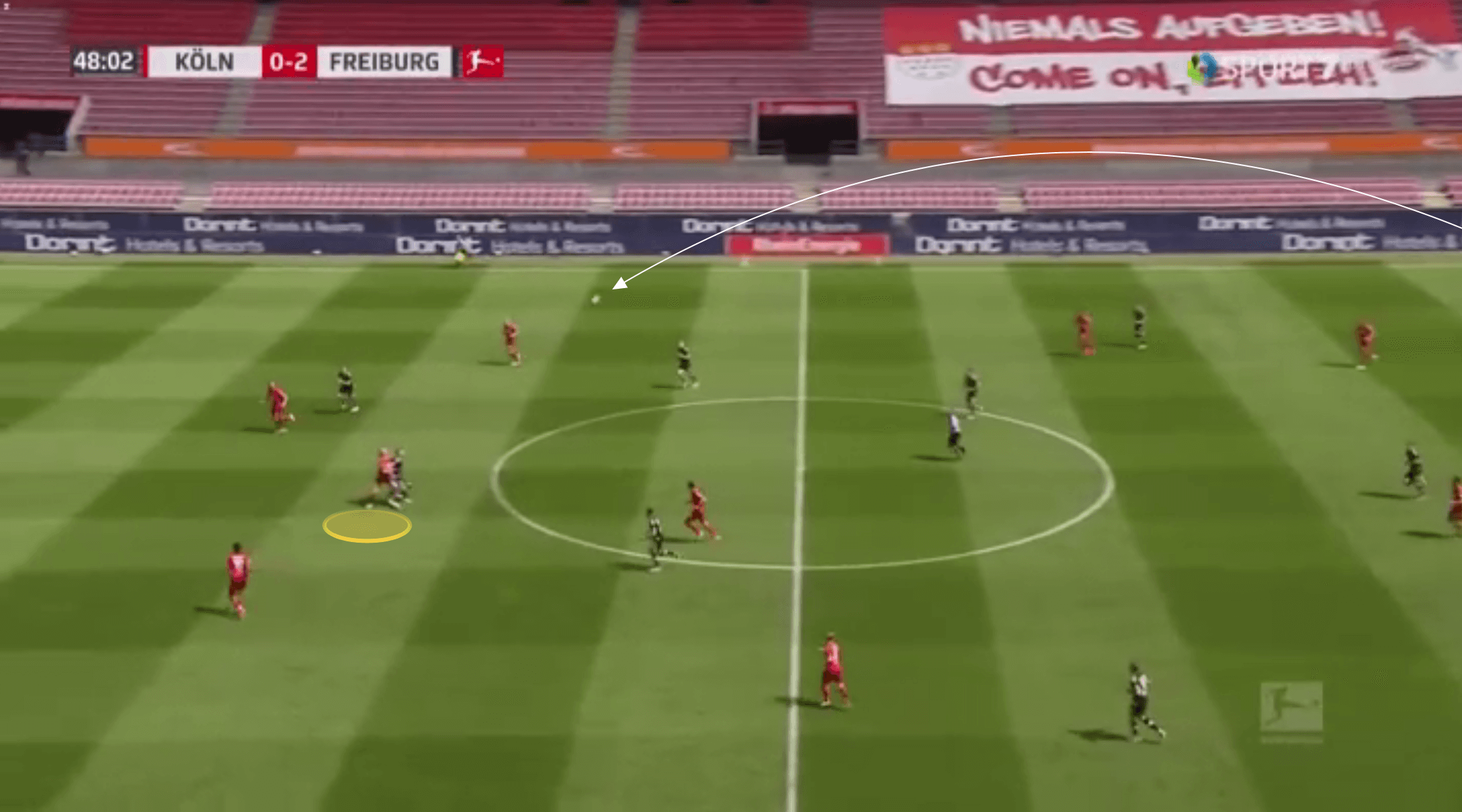
As the ball reaches its destination he shows in this example how he has read the flight of the ball correctly and wins the header with space between himself and the forward, with the opponent not getting close to winning the header.
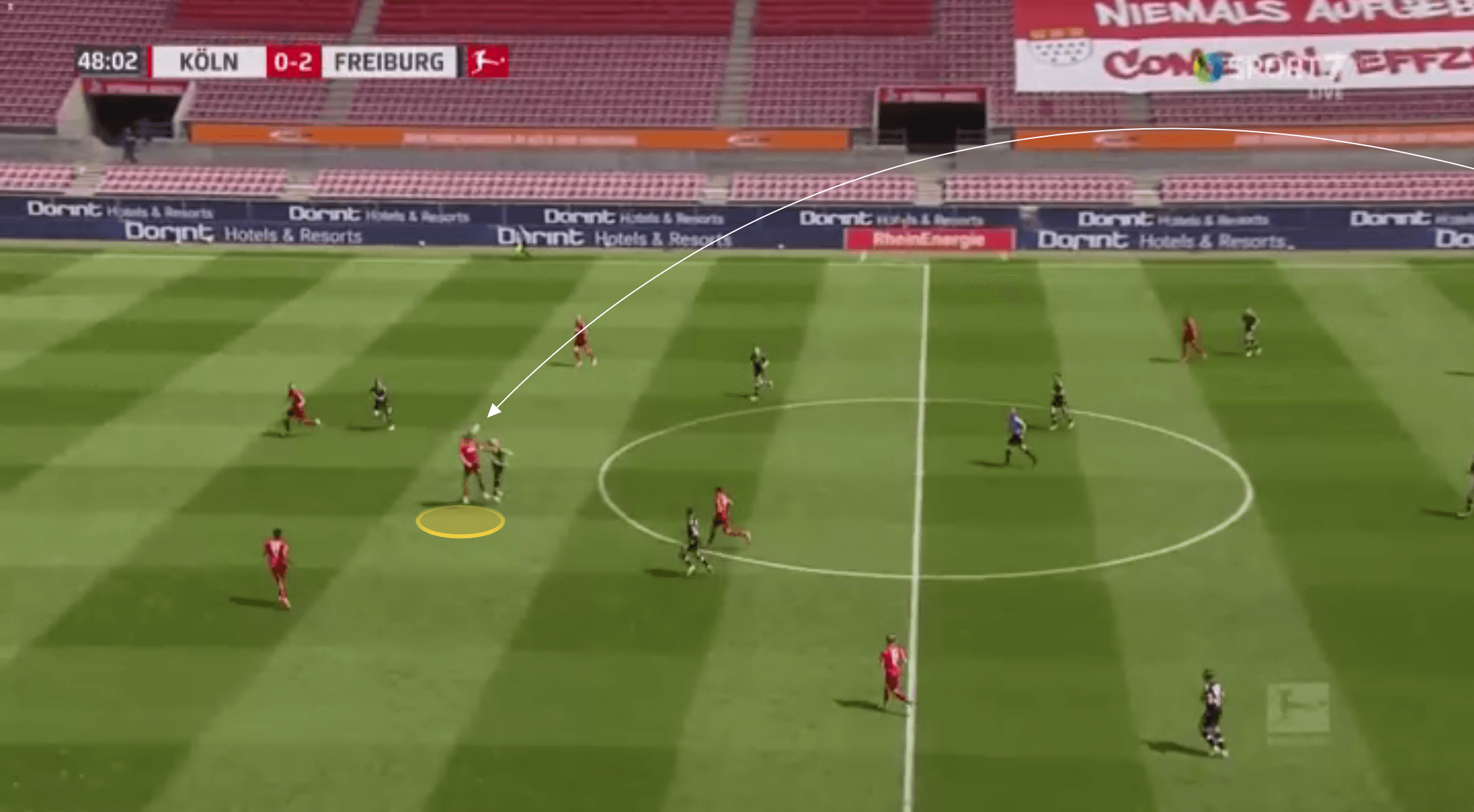
Conclusion
Bornauw has bags of potential although is still raw in some areas of his game. At 22 years of age, he has plenty of time left to be able to continue his development and iron out these issues. With two years of Bundesliga experience, he is a low-risk signing for Wolfsburg, although it will be a step-up in terms of expectations for him with being expected to help his side compete for European football once more, on top of playing in the Champions League.





Comments